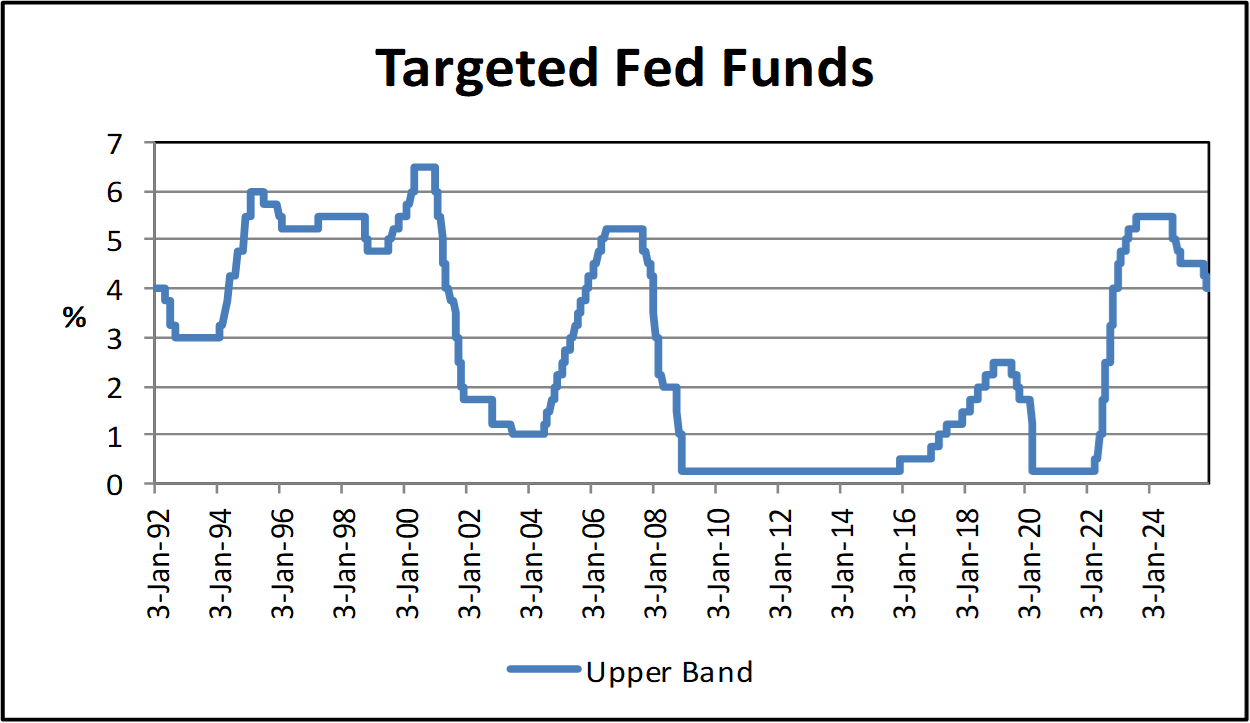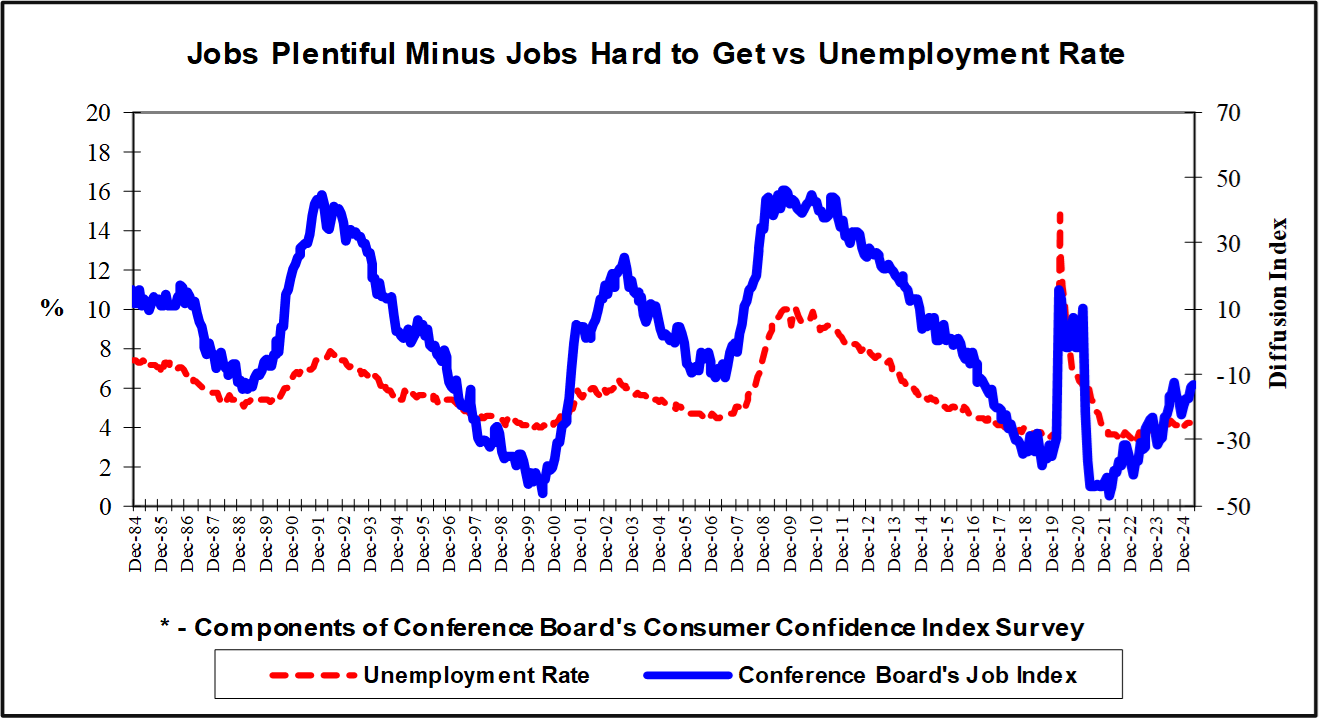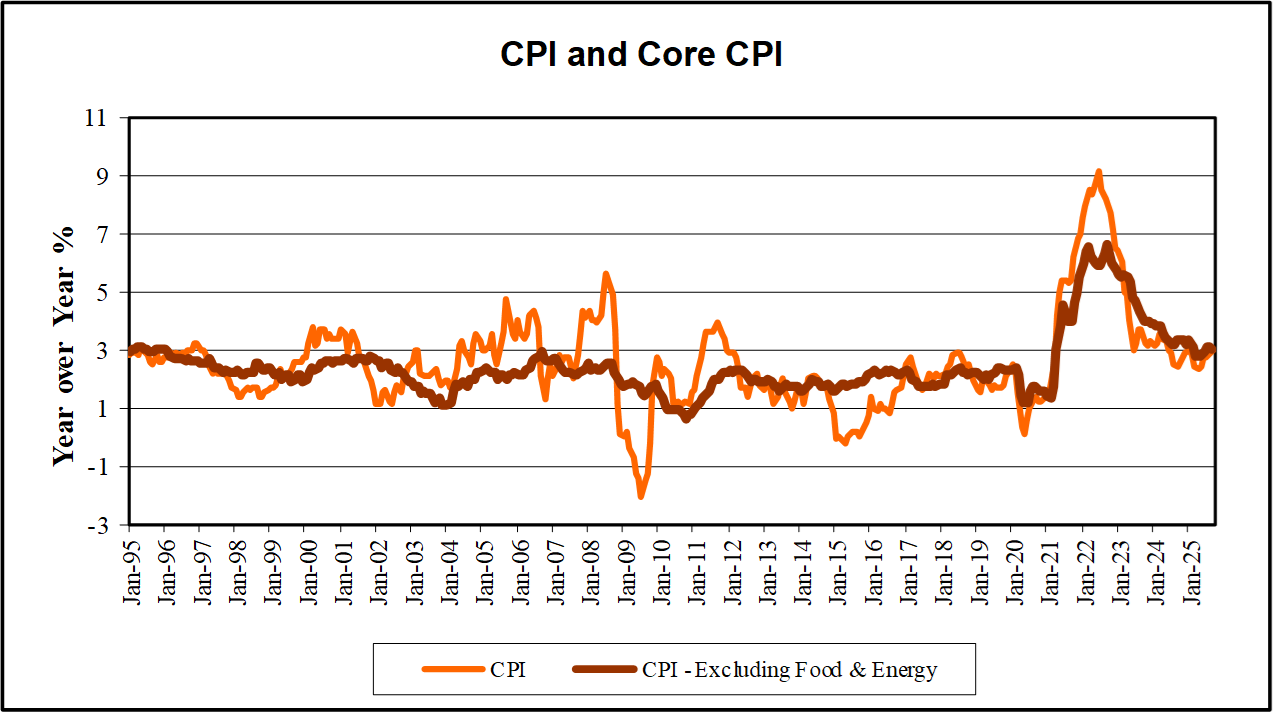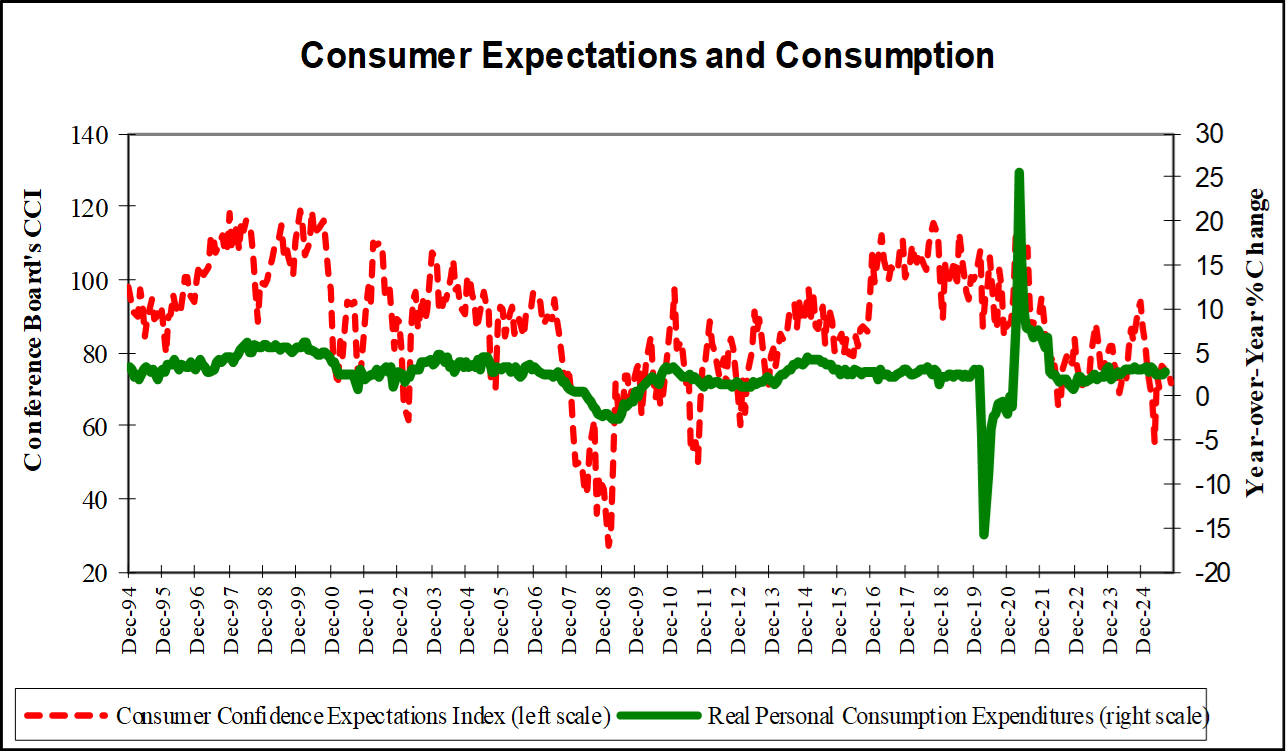October 31, 2025
The U.S. employment sector has shown sudden signs of weakness in recent months, as hiring slowed dramatically, prompting the Federal Open Market Committee (FOMC) to deliver the first rate cut of the year at its September meeting. With the official data pipeline frozen, alternative data indicated further weakening in the labor market. The FOMC delivered its second 25 basis point rate cut at its October 27-28 meeting, bringing the targeted fed funds range down to 3.75% to 4.00%. The central bank elected to err on the side of caution and meet financial market expectations.

Some of the alternate labor market-related indicators that signaled further cooling were the Job Openings and Layoff Turnover Survey (JOLT), the National Federation of Independent Businesses (NFIB) Small Business Optimism Index, the ADP Private Employment Change Report, the Conference Board’s Consumer Confidence Index and the Federal Reserve’s Beige Book. JOLTS showed that the demand for labor taking hits on multiple fronts. Rapid technological change, concerns over the growth outlook and the government shutdown are dwindling the availability of jobs. Job openings have fallen just below the number of unemployed for two months, and consumers are taking notice. From the Consumer Confidence Index, the share of respondents viewing jobs as “plentiful” less those viewing jobs as “hard to get” continue to trend the wrong way. The ADP change report has posted negative for the past two months and the Beige Book noted more employers reported lowering headcount through layoffs and attrition due to weak demand, uncertainty and, in some cases, due to investment in AI. All suggest the unemployment rate will rise in coming months.

The Fed’s stable price mandate remains in tension with its full employment mandate. Inflation has been running above the Fed’s target for four and one-half years, and has been moving higher in recent months. While the Consumer Price Index (CPI) for September came in slightly cooler than anticipated, primarily due to cooling in primary shelter costs, the headline number still rose from 2.9 percent to 3.0 percent on a year-over-year basis. The core, less food and energy, number also showed a 3.0 percent year-over-year rate of increase. September CPI was the lone piece of inflation data reported by the federal government due to the current shutdown as it was essential for the calculation of the annual cost of living adjustment to social security payments. Both the headline and core numbers remain well above the Fed’s 2.0 percent target, and signs suggest that elevated inflationary pressures are likely to persist in the months ahead. The Beige Book noted that several Federal Reserve Districts indicated that input costs increased at a faster pace due to higher import costs and the higher cost of services such as insurance, health care, and technology solutions. The Fed’s view has generally been that the impact of higher tariffs on inflation can be ignored as a one-time event, not an ongoing increase. Others question that view, and only time will tell if that view proves to be correct.

Consumption has been resilient for most of the year, but there are early signs that the government shutdown is beginning to weigh on sentiment. Deterioration is visible in both consumers’ assessment of current conditions and their expectations for future economic conditions. Tariffs and low job availability have fueled concerns about higher inflation and unemployment. Concern that the mutually reinforcing dynamics between consumption and employment could develop has prompted the Fed to cut rates, moving closer to what they view as the neutral rate.
The latest rate cut had the same risk-management logic as the September rate cut, i.e., the shift in the assessment of downside risks to employment was greater than the upside risks to price stability. The vote was not unanimous as there were two dissents, and those dissents were in opposite directions. Fed Governor Miran preferred a 50 basis point rate cut whereas Kansas City Fed President Schmid wanted to keep rates unchanged. With a divided Fed on display Fed Chairman Powell, in his post-meeting press conference, commented that a rate cut in December, the final FOMC meeting of the year, is “far from” a foregone conclusion. Powell also noted that the 150 basis points in rate cuts since September of 2024 has put the fed funds rate much closer to the neutral rate. While he believes Fed policy is still “modestly restrictive,” they are now within the range of neutral shown by FOMC participants in their most recent “dot plot” included in the Summary of Economic Projections released at their September meeting. There was also a comment that lack of government data could leave them “driving in a fog,” and that might lead them to slow down.

 Full Fusion
Full Fusion